Removal Procedure
- Disconnect the battery negative cable. Refer to Battery Replacement in Engine Electrical.
- Remove the engine cover. Refer to Engine Cover Replacement in Interior Trim.
- Remove the air cleaner assembly. Refer to Air Cleaner Assembly Replacement in Engine Controls.
- Remove the air inlet duct from the throttle body assembly.
- Remove the radiator. Refer to Radiator Replacement in Engine Cooling.
- Remove the condenser, if equipped. Refer to Condenser Replacement in HVAC Systems with A/C - Manual.
- Remove the radiator grille. Refer to Grille Replacement in Exterior Trim.
- Remove the engine cooling fan. Refer to Fan Replacement in Engine Cooling.
- Remove the valve rocker arm covers. Refer to Valve Rocker Arm Cover Replacement .
- Remove the intake manifold. Refer to Intake Manifold Replacement .
- Remove the valve lifters and the valve pushrods. Refer to Valve Lifter Replacement .
- Remove the engine front cover. Refer to Engine Front Cover Replacement .
- Remove the crankshaft position reluctor ring.
- Remove the camshaft timing chain and the camshaft sprocket. Refer to Timing Chain and Sprocket Replacement .
- Remove the balance shaft drive gear.
- Remove the camshaft. Refer to Camshaft Removal .
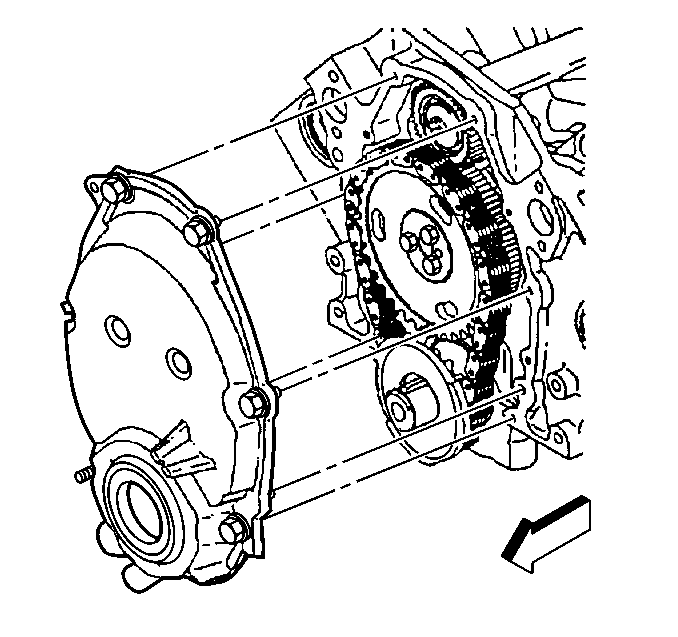
Caution: Unless directed otherwise, the ignition and start switch must be in the OFF or LOCK position, and all electrical loads must be OFF before servicing any electrical component. Disconnect the negative battery cable to prevent an electrical spark should a tool or equipment come in contact with an exposed electrical terminal. Failure to follow these precautions may result in personal injury and/or damage to the vehicle or its components.
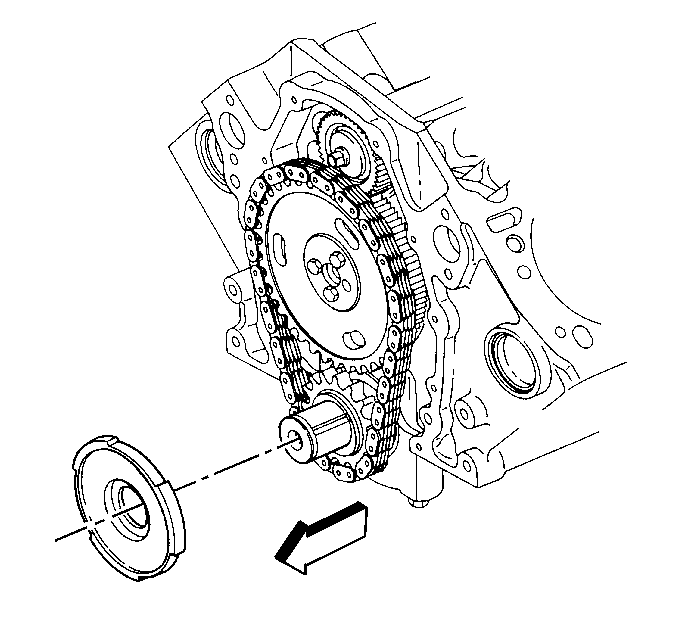
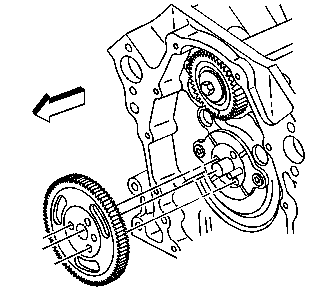
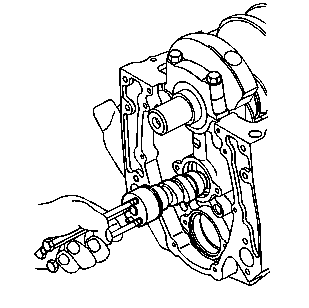
Installation Procedure
- Install the camshaft into the engine block. Refer to Camshaft Installation .
- Position the drive gear onto the camshaft.
- Install the timing chain and sprockets. Refer to Timing Chain and Sprocket Replacement .
- Install the crankshaft position sensor reluctor ring. Refer to Crankshaft Position Sensor Reluctor Ring Replacement .
- Install the valve lifters and the valve pushrods. Refer to Valve Lifter Replacement .
- Install the engine front cover. Refer to Engine Front Cover Replacement .
- Install the intake manifold. Refer to Intake Manifold Replacement .
- Install the distributor. Refer to Distributor Replacement in Engine Electrical.
- Install the valve rocker arm covers. Refer to Valve Rocker Arm Cover Replacement .
- Install the engine cooling fan. Refer to Fan Replacement in Engine Cooling.
- Install the condenser, if equipped. Refer to Condenser Replacement in HVAC Systems with A/C - Manual.
- Install the radiator grille. Refer to Grille Replacement in Exterior Trim.
- Install the radiator. Refer to Radiator Replacement in Engine Cooling.
- Install the air cleaner assembly. Refer to Air Cleaner Assembly Replacement in Engine Controls.
- Install the inlet duct to the throttle body assembly.
- Install the engine cover. Refer to Engine Cover Replacement in Interior Trim.
- Connect the battery negative cable. Refer to Battery Replacement in Engine Electrical.

Important: Whenever a new camshaft is installed, do the following procedures:
• Change the engine oil. • Change the engine oil filter. • Add GM Engine Oil Supplement GM P/N 1052367 or equivalent
to the engine oil.
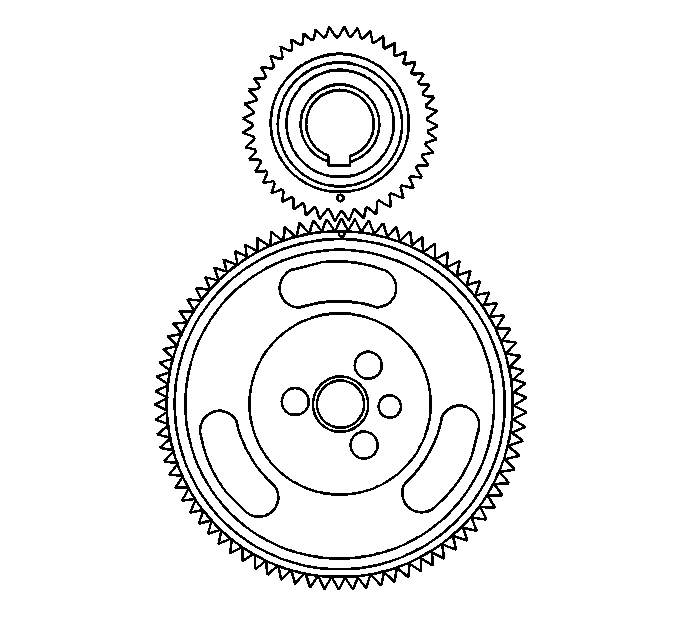
| • | Ensure that the timing marks align. |
| • | The number four cylinder will be at the top dead center of its compression stroke. |
Important: Line up the timing marks on the camshaft sprocket and crankshaft sprocket dot to dot. When these dots are lined up dot to dot, the number four cylinder is at the top dead center of its compression stroke.
Notice: Failure to properly align the crankshaft position sensor reluctor ring may result in component damage and effect OBD II system performance.
Important: Rotate the engine to align the crankshaft balancer marks with the front cover marks for cylinder number one top dead center. When the alignments marks on the camshaft sprocket and crankshaft sprocket are aligned, the engine is at cylinder number four top dead center.
